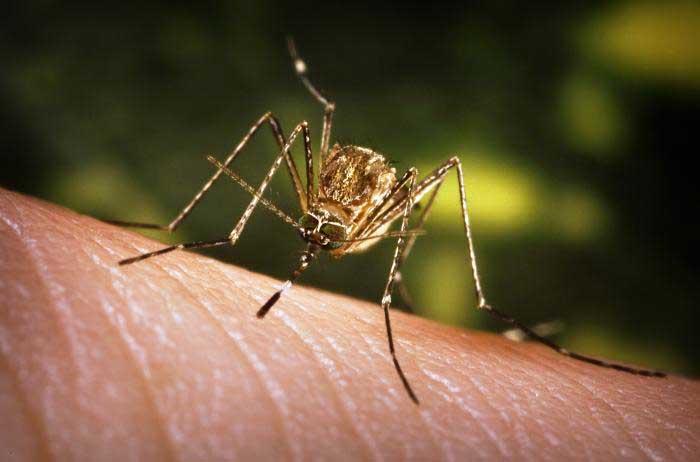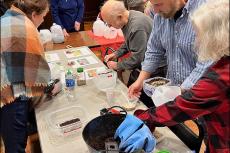An annual mosquito-sampling program in Accabonac Harbor concluded for the season on Friday, and while the coronavirus pandemic meant a loss of some interns and volunteers, this year's reduced program was deemed a success by the East Hampton town trustees and the director of the Suffolk County Public Works Department's division of vector control.
A pilot program launched in 2017 to narrowly target the aerial application of mosquito larvicide around the harbor has brought dramatic declines in its use year over year. The total area treated between 2016, before the program was implemented, and last year represented an 81-percent decrease, and costs to the county were reduced by 77 percent. The use of methoprene, a larvicide, has been of particular concern because of its potential effect on nontarget species, including crustaceans.
Sampling was conducted every other week this year, as opposed to the weekly sampling in previous years, Susan McGraw Keber, a trustee, said. She reported an abundance of dragonflies and fish, as well as eagles and ospreys, where she sampled.
Tom Iwanejko, director of the vector control division, told The Star that a combination product containing methoprene and Bti, a naturally occurring bacterium that contains toxin-producing spores that affect mosquito, blackfly, and fungus gnat larvae, was applied five times to a total area of approximately 100 acres. In 2016, Accabonac Harbor was treated 11 times, he said. "The area of treatment and amount of larvicide applied has been reduced 96 percent through this cooperative program."
Nonetheless, "hot spots" persist, consistent with 2019 data, Mr. Iwanejko said. "Through the cooperative program, we have refined the areas of mosquito presence and identified only those hot spots requiring treatment. This has saved the county in less pesticide used, decreased helicopter time, and benefits to the environment." The county's goal for the program "remains seeking a wetland restoration project to reduce or eliminate the need for future mosquito larvicide applications in the harbor."
"Any time you have water there it becomes a habitat for mosquitoes," Ms. McGraw Keber said. In the area she studied, "we only had the same amount of hot spots" as in 2019. "We did not see pupae," mosquitoes in immature form between larva and adult, where that was common in 2018 and 2019. "There were times when there was nothing."
"Tom was quite satisfied with what we did," she said. "I was very happy and encouraged to see the natural vegetation growing back in hot spots, and to see we had mostly stage one and two [eggs and larvae]. Only once did we have stage three and four [pupae and adult], and Tom got the helicopter to come that day and treat those hotspots."
The Health Department reported on Friday that 46 mosquito samples have tested positive for West Nile virus in the county this year. To date, none have been collected in any of the five East End towns.
West Nile virus is transmitted to humans by the bite of an infected mosquito. Most people infected with it experience mild or no symptoms, but some can develop severe symptoms. Neurological effects can be permanent.




